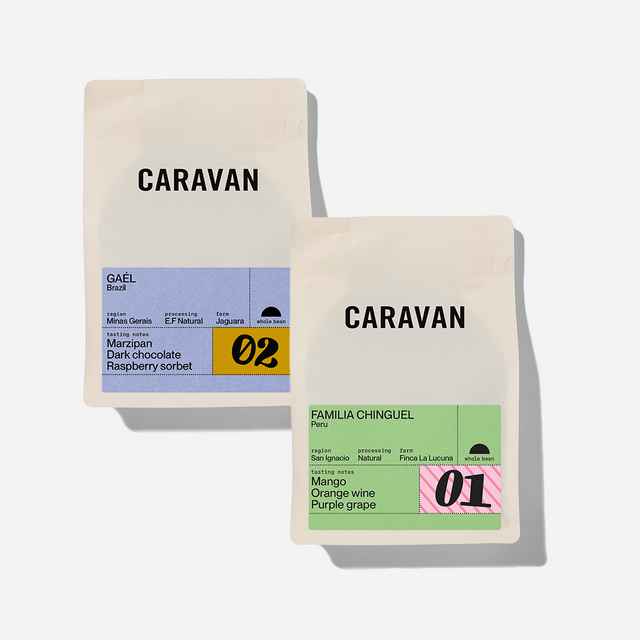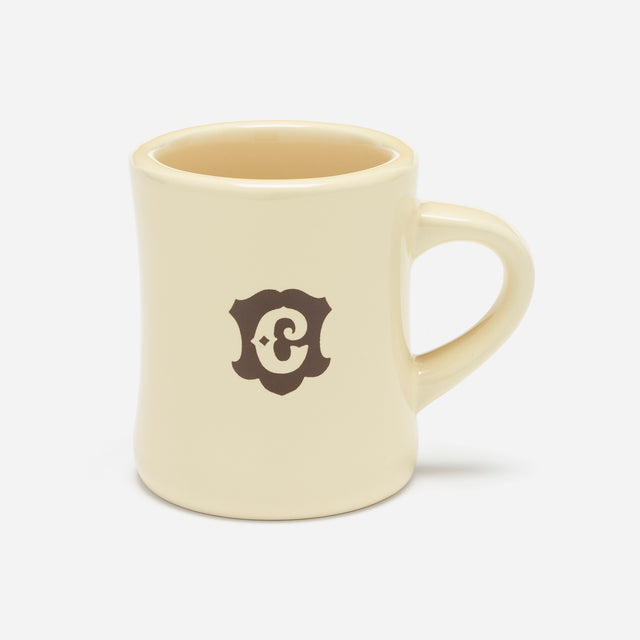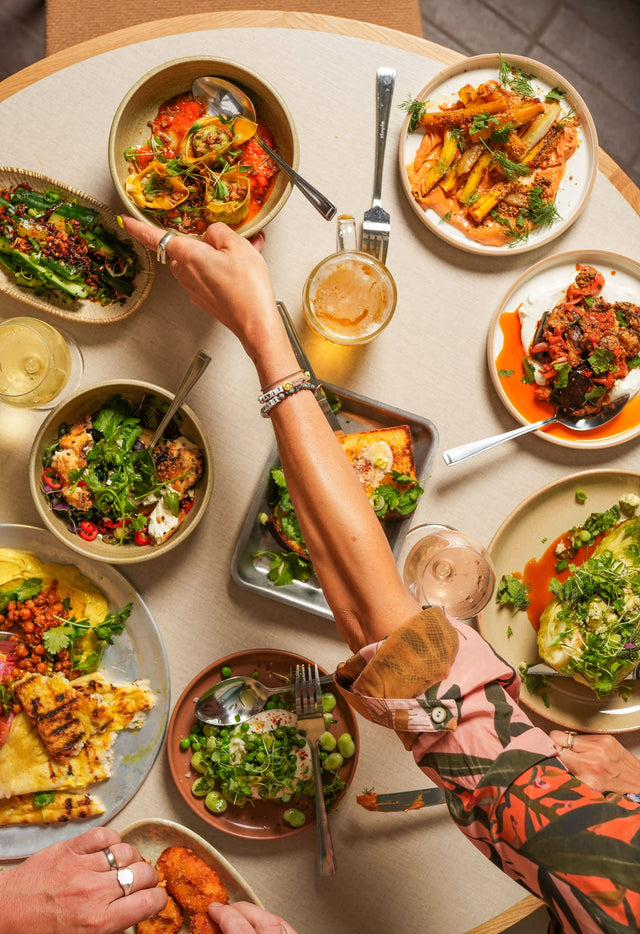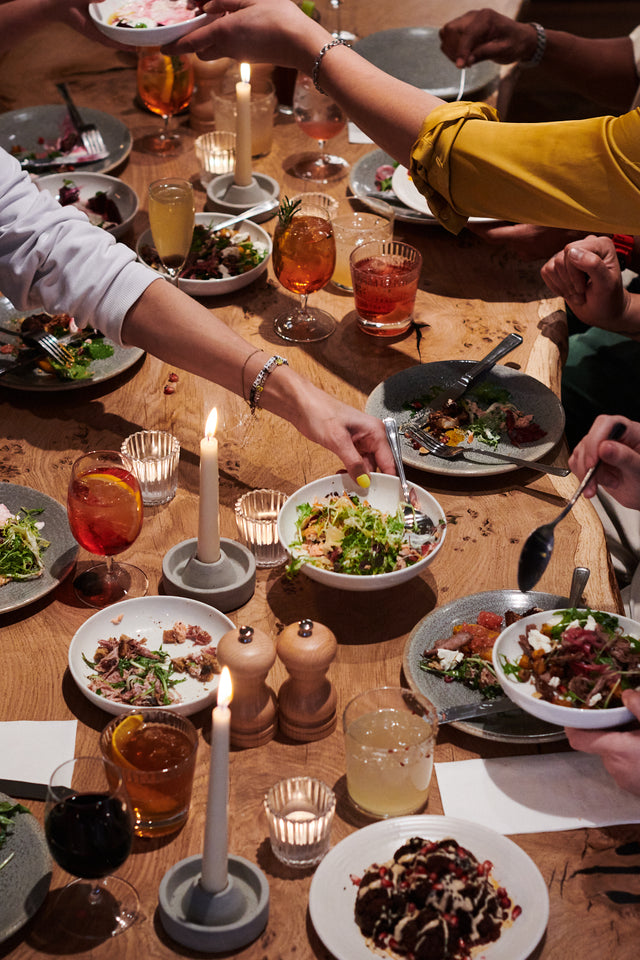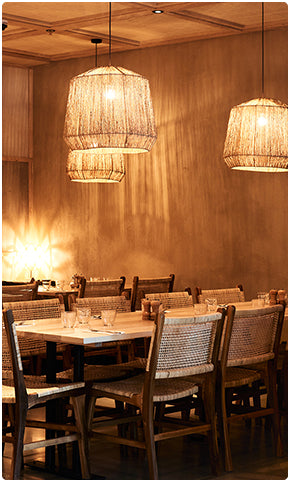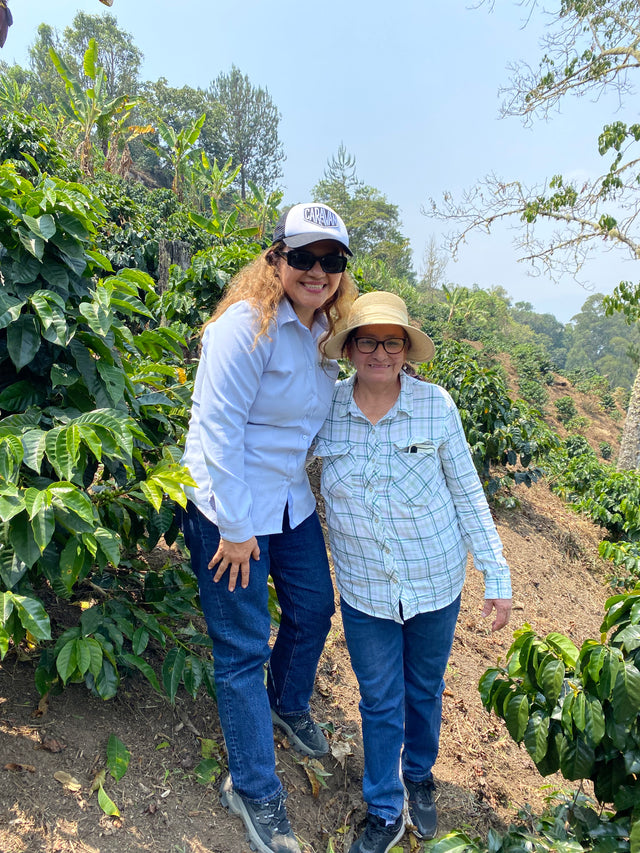Finca El Fénix has enjoyed many titles since it started its journey with Raw Material back in 2014. Cupping lab, experimental farm, traveller HQ, and now, in 2020, it achieves its finest title yet – community wet mill.
The Story of El Fénix
El Fénix’s metamorphosis started as the brainchild of New Zealand coffee pros Matt Graylee and Richard Corney, working closely with Miguel Fajardo who runs Raw Material’s Colombian operations. El Fénix was the first big project ever undertaken by Matt and Richard’s now-global social enterprise, in response to observations that many farmers weren’t able to take advantage of the quality potential of their coffee. In the Quindío region, as in much of the coffee-growing world, this disadvantage is due in large part to unpredictable coffee prices and lack of processing infrastructure. Matt, Richard and Miguel set out to disrupt this cycle by building solutions into their business model, and in the case of El Fénix – in physical form.

[photo courtesy of Raw Material]
The farm sits at 1700-1800 meters above sea level, looking westward toward the Cauca Valley. There was only the most basic amenities present on the farm when it was purchased in 2014, thus the project has included many phases of construction since its inception. The ultimate goal has been to build a community wet mill; a processing facility which would add value back to the local community. Along the way, the team has built a cupping lab, an office, drying beds, accommodation for travellers and more. The construction of the wet mill itself (the most laborious and expensive phase of the project) has been ongoing since the beginning.
The idea for the community wet mill, as described by Miguel himself when our Head of Coffee spoke with him recently via IGTV, was to address two major issues faced by the area’s small producers. In the region, a lack of processing capacity at many of the farms means that during harvest, they are not able to process all of their coffee at once when the peak of the harvest comes. Coffee cannot be held in cherry form, because it would (like all fruit) quickly begin to rot in the Colombian heat. Therefore, many farmers lacking any other option, sell their excess cherries onto local middle men at below-market prices.
The second issue, one that typifies the reality for many coffee producers the world over, is the unstable price of coffee itself. Farmers cannot count on the market price of coffee covering their cost of production year on year; therefore life on the farm is a constant state of precarity, without assurances that the farm will turn a profit at any given harvest. Raw Material has built into their model a flat-rate pricing system, which uses the local cost of production, combined with quality, to ensure that all farmers they work with receive a fair, stable, and transparent price for their coffee.

El Fénix community wet mill prior to construction [photo courtesy of Raw Material]
In 2016, to raise money for the mill, Raw Material ran a Kickstarter campaign in which companies or individuals were able to sponsor anywhere from a single tree to an entire lot of coffee at the farm. Caravan sponsored eight, making us El Fénix’s largest single contributor. We are thrilled to have been a part of this ground-breaking project from the beginning.
Each of our lots was planted with a single varietal of coffee, including well-known varietals such as Geisha, to the more rare and curious sounding ‘Wush-Wush’. This summer was the first full harvest from our sponsored lots, with great weather and healthy trees contributing to a truly stellar crop. This July, we are thrilled to offer the first-ever release from the El Fénix project in the UK. This coffee comes from our Pink Bourbon lot, and shows off this farm’s incredible potential in the cup, with juicy acidity reminiscent of ripe peaches and watermelon.
Pink Bourbon: What’s in a Name
Within the coffee growing world, there are hundreds of different ‘varieties’ of the coffee tree (sometimes referred to as cultivars). These range from very old and traditional varieties such as Bourbon and Typica, to newer, purpose-bred ones (such as Marsella and Tekesic) all the way through to next-generation F1 Hybrids. Each variety serves a different purpose, and are often grown in only certain regions where that particular tree’s genetic expression adapts best to the local environment.
Pink Bourbon is a new expression of a traditional variety, being a naturally occurring mutation between the red and yellow varieties of Bourbon. Bourbon has a long and revered history, and is still prized for its superior cup quality around the world. Having come to Reunión Island (formerly Bourbon Island) by way of Yemen in the 18th century, it was grown there by missionaries until the mid-1800s, when it was then introduced to Latin America through Brazil. Cultivation of the variety spread rapidly, and today many areas of the continent continue to grow Bourbon trees which are not at all dissimilar to those brought over in the 19th century.

Pink Bourbon cherries at El Fénix [photo courtesy of Raw Material]
The pink mutation was only recently identified, having been discovered first by farmers in the department of Huila, south of Quindío. Being less than a decade old, the variety is not yet considered stable by most coffee breeders, which makes its continued study and cultivation all the more interesting. The differences between pink bourbon and its red and yellow cousins are mainly in cup quality, with unique flavours and surprisingly pink fruit-like acidity. The Pink Bourbon trees grown at El Fénix are what are referred to as a ‘dwarf’ variety, meaning they grow shorter and wider in comparison to others. This smaller stature means that the farm was able to plant 5,000 trees in the same amount of space that other trees would only fit 2,500-2,800.
The Future: Serving the Community
The El Fénix mill is now ready to start accepting cherries from the local community when the fly crop begins in October. The mill has been designed for modularity, meaning they can process small and large lots, blended lots, and lots separated by farmer and/or variety. The mill also has the capacity to process honey and natural coffees, which impart different, often sought-after flavours compared to the traditional washed method. Miguel and his team oversee the working of the mill, hiring locally to keep the value of the work in the community.
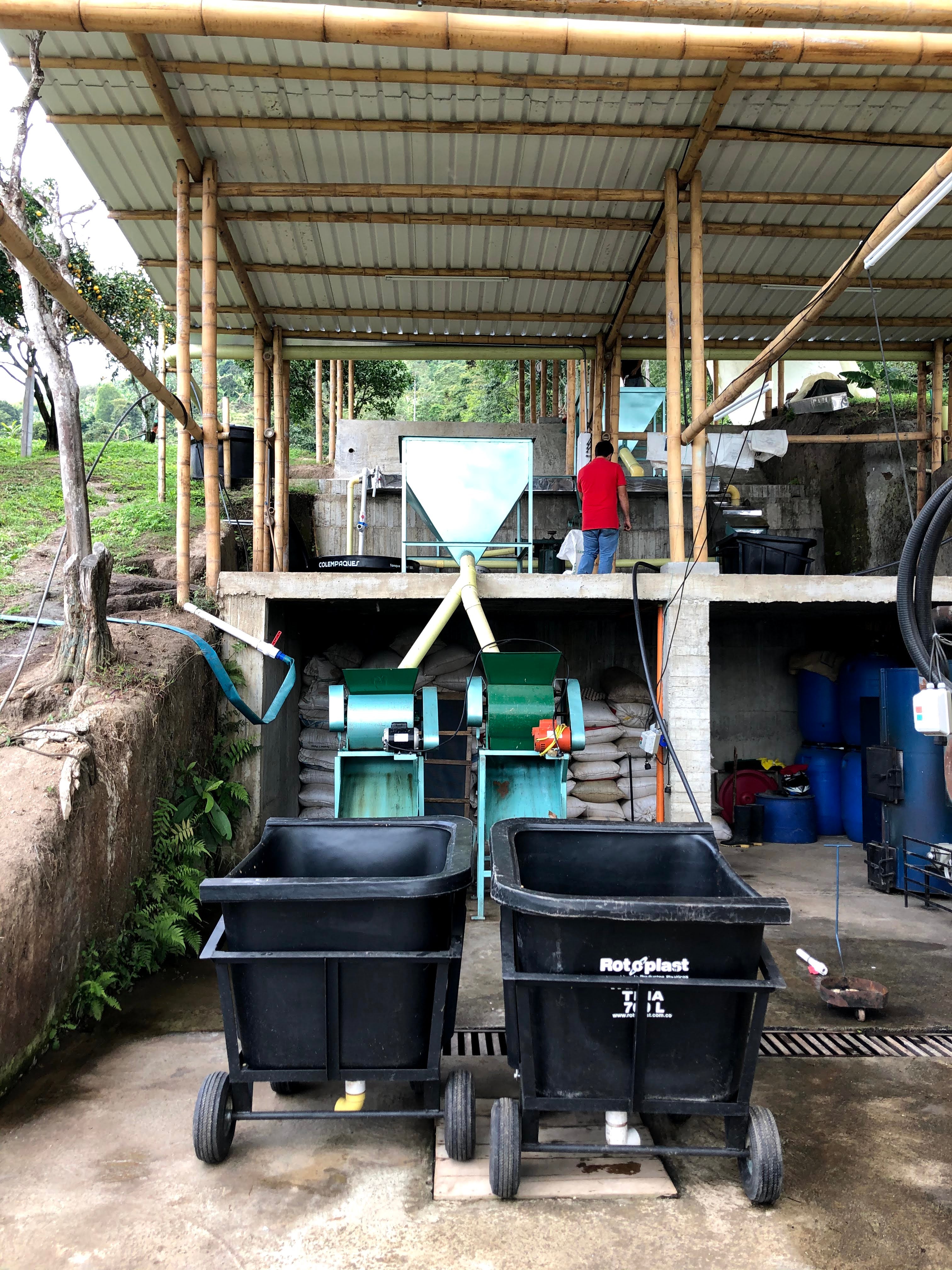
The El Fénix community wet mill ready to start accepting cherries [photo courtesy of Raw Material]
The coronavirus crisis has hit the coffee industry hard, with many cafes, restaurants, and roasteries taking on major losses. This ripple effect is sure to be felt within the producing community as well, as coffee buyers reduce their spending as they try to weather the storm. In Colombia, an additional effect of the pandemic has been the inability of coffee pickers to travel from region to region as they normally would. Instead, farmers are reliant on family and local labour to work the harvest, which is not always adequate. Luckily for El Fénix, their long relationship with the local community means they are able to secure all their labour needs for this harvest, but all eyes are on what will happen to the national coffee industry should the crisis continue to escalate.
From all of us at Caravan here in London, we are happy to support and to celebrate with our partners at Raw Material, El Fénix, and the community of Santo Domingo Alto. Our thoughts and well wishes are with the team in Colombia and we hope the upcoming harvest and the opening of the community wet mill goes on smoothly, with much more delicious coffee on its way in the future.
¡Abrazos!

